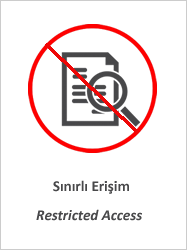Assessment of the effect of pulsed electromagnetic field application on the healing of bone defects in rats with heparin-induced osteoporosis

Göster/
Erişim
info:eu-repo/semantics/closedAccessTarih
2020Yazar
Topal, OlgunÇına Aksoy, Müge
Çiriş, İbrahim Metin
Kumbul Doğuç, Duygu
Sert, Seden
Çömlekçi, Selçuk
Üst veri
Tüm öğe kaydını gösterÖzet
Osteoporosis is a systemic skeletal disease characterized by an increase in bone fragility and fracture risk due to low bone mass and deterioration of bone tissue. Application of pulsed electromagnetic fields (PEMF), a non-invasive method with a low complication risk, is known to stimulate bone formation. The present study examines the histomorphometric and biochemical effects of PEMF application on the healing of bone defects in rats with heparin-induced secondary osteoporosis. Briefly, 12-month-old male Sprague-Dawley rats were examined in a prospective, randomized, single-blind study. Osteoporosis was induced by administering a daily dose of 2 IU/g heparin for 33 days. Bone defects were created on the right femur on Day 35. PEMF of an average intensity of 0.8 +/- 0.2 mT and a frequency of 7.3 Hz, was applied for 1 h/day, for 28 days following surgery. Bone healing was evaluated by histomorphometric and biochemical analyses. The heparin + PEMF group displayed the largest amount of new bone area (P = .002) and the lowest mean CTx on Day 63 (P = .05). This study demonstrates that heparin administration leads to bone loss and osteoporosis, whereas the application of PEMF decreases this effect.















